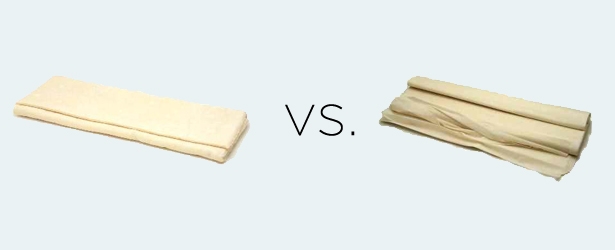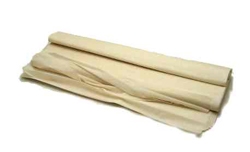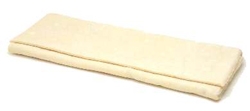While working on my next big post, I realized something. I’ve been mixing-up my terminology when it comes to puff pastry. Although this isn’t a uniquely vegan ingredient, it’s one of those things that instantly (and easily) adds a lot of elegance to any meal. So I’ve chosen it as the next topic in my What’s That? series.
The first time I ever used Phyllo dough was probably back during my university days when I made homemade Baklava as a vegan dessert option for our family holiday gathering. I remember unrolling the paper-thin sheets of Phyllo dough and carefully laying them out to brush them with vegan margarine, sugar and nuts. And then somewhere along the way, I began to stack-up 5-10 phyllo sheets to make pie shells for things like tofu pot pie. And that’s how it went for years until I moved to Australia. Here, I came across thick vegan puff pastry and I began to use the terms puff pastry and phyllo dough interchangeably. But they’re not at all the same thing!
Facts:
- Puff pastry dough is made by placing chilled butter (or margarine) between layers of pastry dough. It is then rolled out and folded, again and again until there are many layers of dough and butter/margarine. Croissants are a well-known use for puff pastry.
- Phyllo (also spelled filo) dough is tissue-thin pastry dough. It is used in many Greek and Middle Eastern dishes. Phyllo dough can be used as a substitute for strudel dough or for other pastry wrappers, such as turnovers or spring rolls.
- Puff pastry dough and phyllo dough are very different. In some cases, you could use them interchangeably – like for a pie crust or strudel. But for things that are very fluffy and flaky- like Baklava – you’d definitely want to use Phyllo dough.
- Phyllo dough is lower in fat than puff pastry – but if you use a lot of butter or margarine between the phyllo layers, it might even-out. Another option is to use a light spray of olive oil instead.
Personally, I prefer to use puff pastry for typical things like pie shells or stuffed pockets, because:
- You only have to work with one sheet (as opposed to maybe 5-10 stacked sheets of Phyllo)
- I find that puff pastry doesn’t dry-out as quickly as Phyllo so it’s a lot more forgiving
- With Phyllo dough, you typically have to defrost the whole roll. However, here in Australia, I’ve managed to find 23x23cm sheets of puff pastry dough that are individually wrapped – so I only have to defrost what I need.
- Phyllo dough takes 24 hour to defrost in the refrigerator, but my puff pastry sheets are ready to use within 15 minutes. I like the fact that I can pull-off a “fancy meal” at a minute’s (well, 15 minutes) notice.
So, now that we’ve cleared all that up, hopefully you’ll be inspired to try puff pastry in your next recipe. It’s certainly not something that I eat every day… but it lets me be creative with the delivery and creativity of my meals and it’s really easy to work with. If you haven’t tried using it, give it a go, it’s really easy but your meal will look like you slaved all day!
PS. I’ve fixed all my puff pastry recipes that were previously calling for Phyllo 🙂


